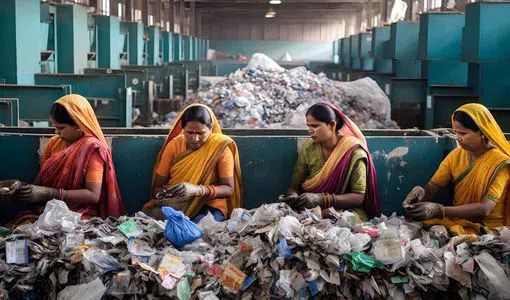 Image Source: Daily Subah
Image Source: Daily Subah
India stands at a crossroads: while government initiatives like the Plastic and e-Waste Management Rules and the formation of 11 sectoral committees point towards strong intent, the journey towards a circular economy for India is hindered by a non-linear policy framework, poor infrastructure, and little people awareness. While an estimated 30% of GDP and $2 trillion of market value with 10 million jobs can be retained using circular approaches by 2050, grassroots traction is slow.
The real challenge is not ambition but implementation. Most waste still remains unsegregated, technology uptake in recycling is low, and secondary markets for recyclable goods are poorly developed. To have a true circular economy, India will have to invest in R&D, modernize waste logistics, incentivize innovation, and integrate policy systems. Through the balancing of government, business, and citizen action alone can India make circularity a workable, sustainable reality.
Source: ORF, RPRA, DD News, CEEW, The Guardian, PIB
Advertisement
Advertisement




